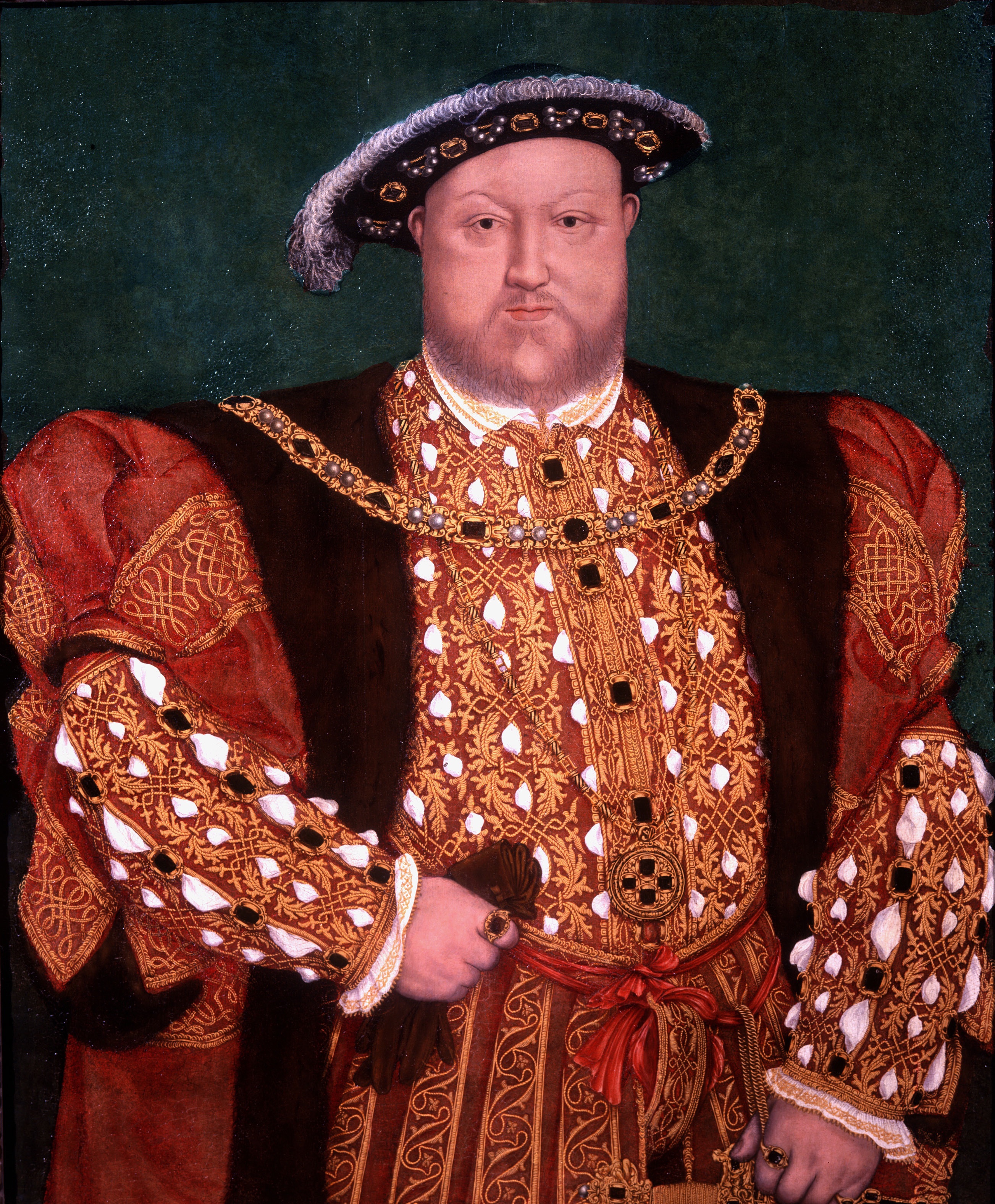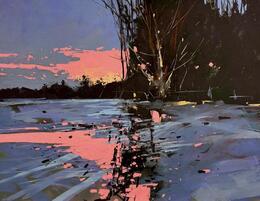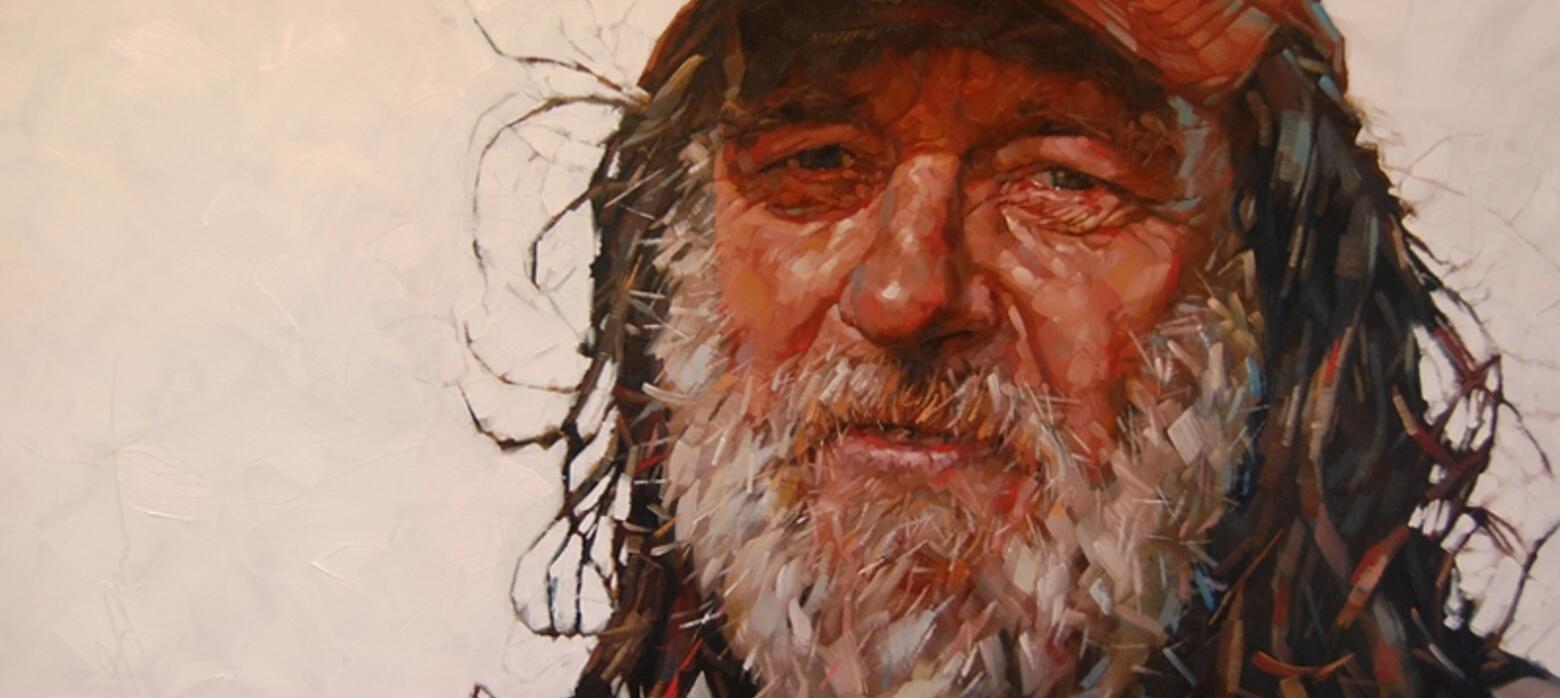The History of Portraiture
By Philip Mould OBE
The Artist Explorer was generously funded by Foyle Foundation.
Overview
For 500 years we have been a nation of portrait lovers. We not only gave birth to great face painters - native geniuses like William Dobson, William Hogarth, Sir Joshua Reynolds, Thomas Gainsborough and Sir Thomas Lawrence - but, when needs must, we lured them to our shores.
Masters like Hans Holbein, Sir Anthony van Dyck, Sir Godfrey Kneller, Carl Xavier Winterhalter and John Singer Sargent came to London for the riches and acclaim that a society in thrall to self-representation could bestow upon them.
In more recent years British artists like Stanley Spencer, Lucian Freud and David Hockney have continued to keep the British face in the forefront of world class figurative art.
Today
Today, portrait painting is a thriving art form that has enjoyed a notable revival, evidenced by the multifarious offerings and talents that surface annually at the National Portrait Gallery and Royal Society of Portrait Painters.
The breadth, depth and status of the National Portrait Gallery in London (founded in 1856) has no equal throughout the world, including America. It enriches this art form with establishment approval.
The House of Commons and the House of Lords are continuously commissioning new works for their art collections, as are numerous city guilds, inns of court and civic organisations across the country. At any given moment there are hundreds of individuals throughout the nation who are being immortalised in countless contrasting guises and media.
Tudor Origins
In Tudor times, a preoccupation with asserting (recently acquired) authority co-incided with a ban on religious art. As a result, the German genius Hans Holbein was commissioned with expectant gusto as a portraitist. Only a man of his illusionistic powers could transform the calorific bulk that was Henry VIII into an object of imperial strength.
He was little short of a magician. His drawings of the faces of the Tudor court reach the contemporary viewer with a cinematic clarity and conviction, laying the foundations of our portrait culture.

Power Portraits
The big players at the most evocative moments in English history benefited from the services of some outstanding painters. The supremely graceful marriage between the artistic genius of the Flem, Anthony Van Dyck and the spindly frame of Charles I led to images of almost divine power. Later in the century Charles II found in Sir Peter Lely a man who could voyage across the sensuous cheeks and bodies of the court mistress better than he could.

Meritocrats of the Enlightenment were immortalised in multifarious guises by Reynolds, who grafted the gesticulations of Roman antiquity onto pale English bodies.
Although the Victorians lacked the type of élan suited to the swagger brush, George IV’s early 19th century Regency froth was crystallised by Sir Thomas Lawrence.

Afterwards, the Edwardian beau monde was captured by the dazzling, effervescent strokes of John Singer Sargent.
Innovation, chic, directness and theatre mark out all these portraitists: indeed it is tempting to believe that they in part created, rather than merely recorded, the history of British society.
Middle Class Pride
Underpinning the history of British portraiture has been an insatiable need to record status and achievement. The great swell in middle class population from the late 17th century created a merchant and professional class that began commissioning portraits. The mayor, the soldier, the banker, the cleric and the politician – together with their respective wives and sometimes children - all required a brush with immortality.
William Hogarth was the first native born painter of genius who understood the balance between rank and personality. Thomas Gainsborough’s portraits of his Ipswich sitters, Sir Henry Raeburn’s Edinburgh worthies, and the innumerable heads by artists like John Partridge, George Frederick Watts and John Everett Millais follow a path through the 20th century that culminates, amongst other places, at the Royal Society of Portrait Painters.

Portraits for Art’s Sake

Portraiture, or the human face and body, have allowed artists to express their own concerns and interests about the human condition. This is part of a long tradition that in some ways could be said to have begun with the introspection of Rembrandt’s self-portraits. It has taken on exciting and varying directions.
Francis Bacon contorted bodies and visages brilliantly to express his psychic angst. In many ways every Lucian Freud is a self-portrait, so consistent are his compellingly individualistic, often unsettling characterisations.
What is keeping figurative portrait painting artistically alive is the work of genuinely innovative practitioners who infuse what could become a pedestrian art form with personal, reflective and challenging approaches.
 © Philip Mould OBE 2009
© Philip Mould OBE 2009
Picture credits
Top to bottom:
Studio of Holbein, Henry VIII, © Historical Portraits Ltd.
Sir Peter Lely, Moll Davis, © Historical Portraits Ltd.
Sir Thomas Lawrence, George IV, © Historical Portraits Ltd.
William Hogarth, William Fitzherbert, © Historical Portraits Ltd.
June Mendoza, Baroness Thatcher, © Historical Portraits Ltd.
Stuart Pearson Wright, Ben Whishaw, © Historical Portraits Ltd.

